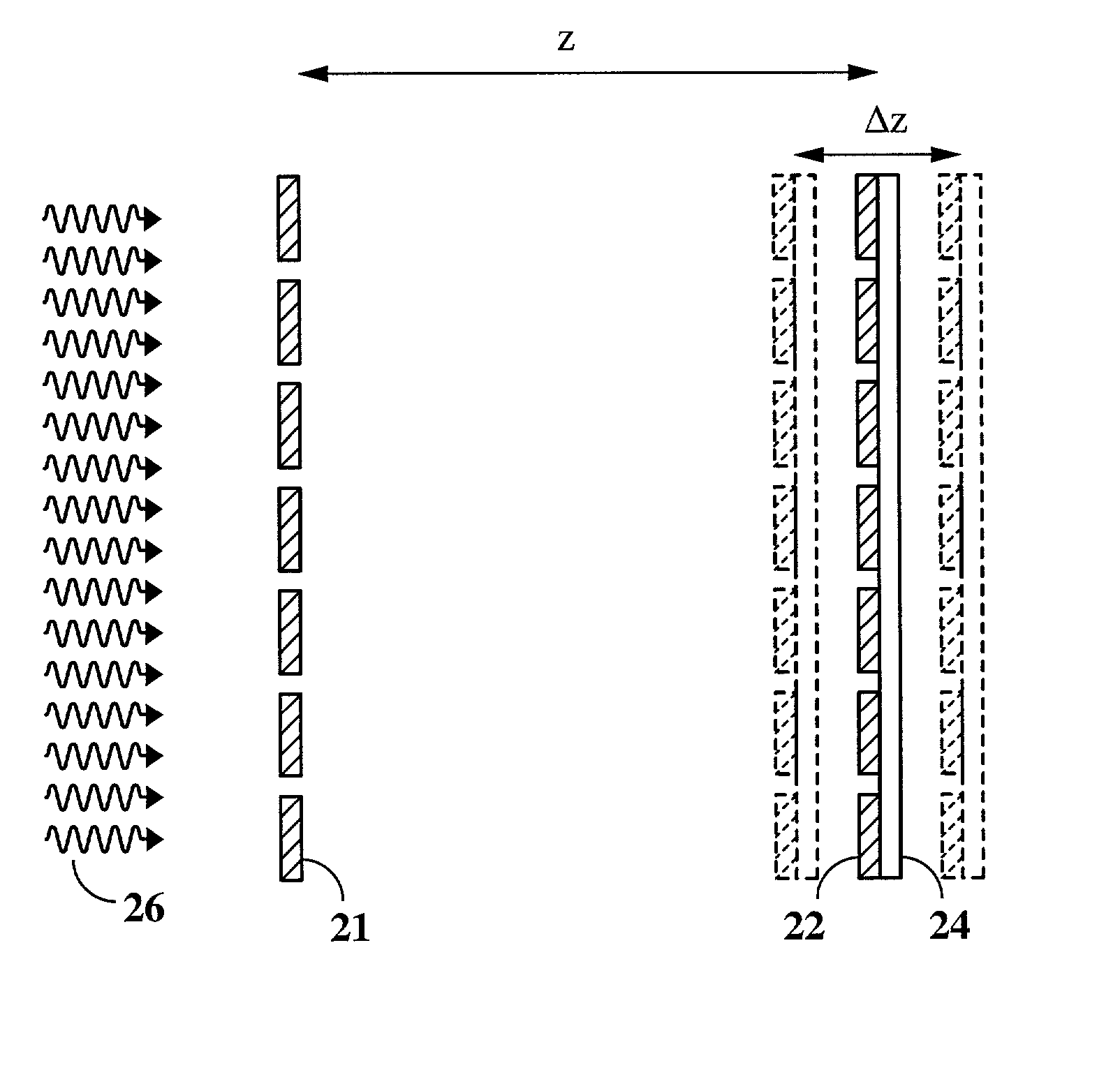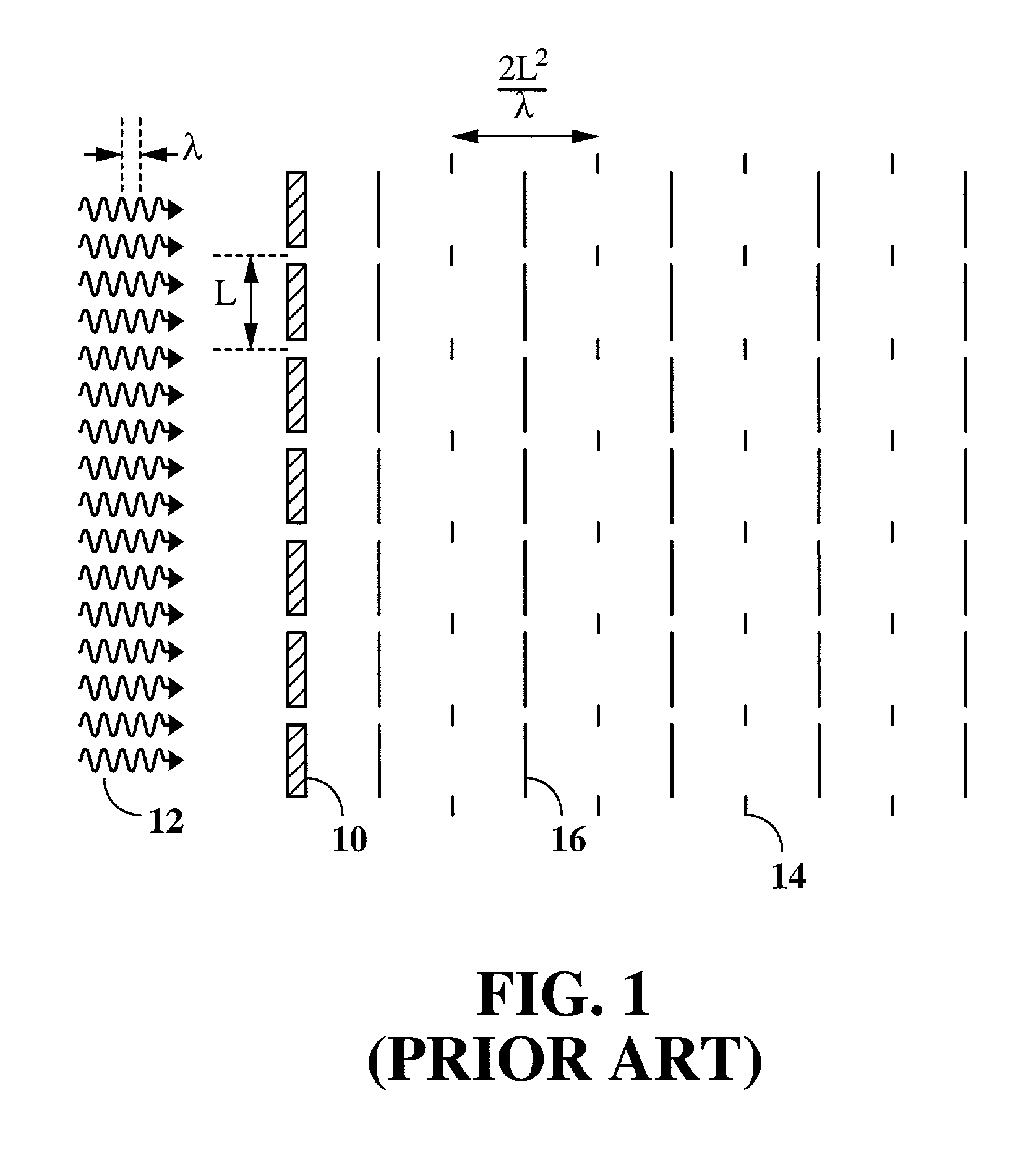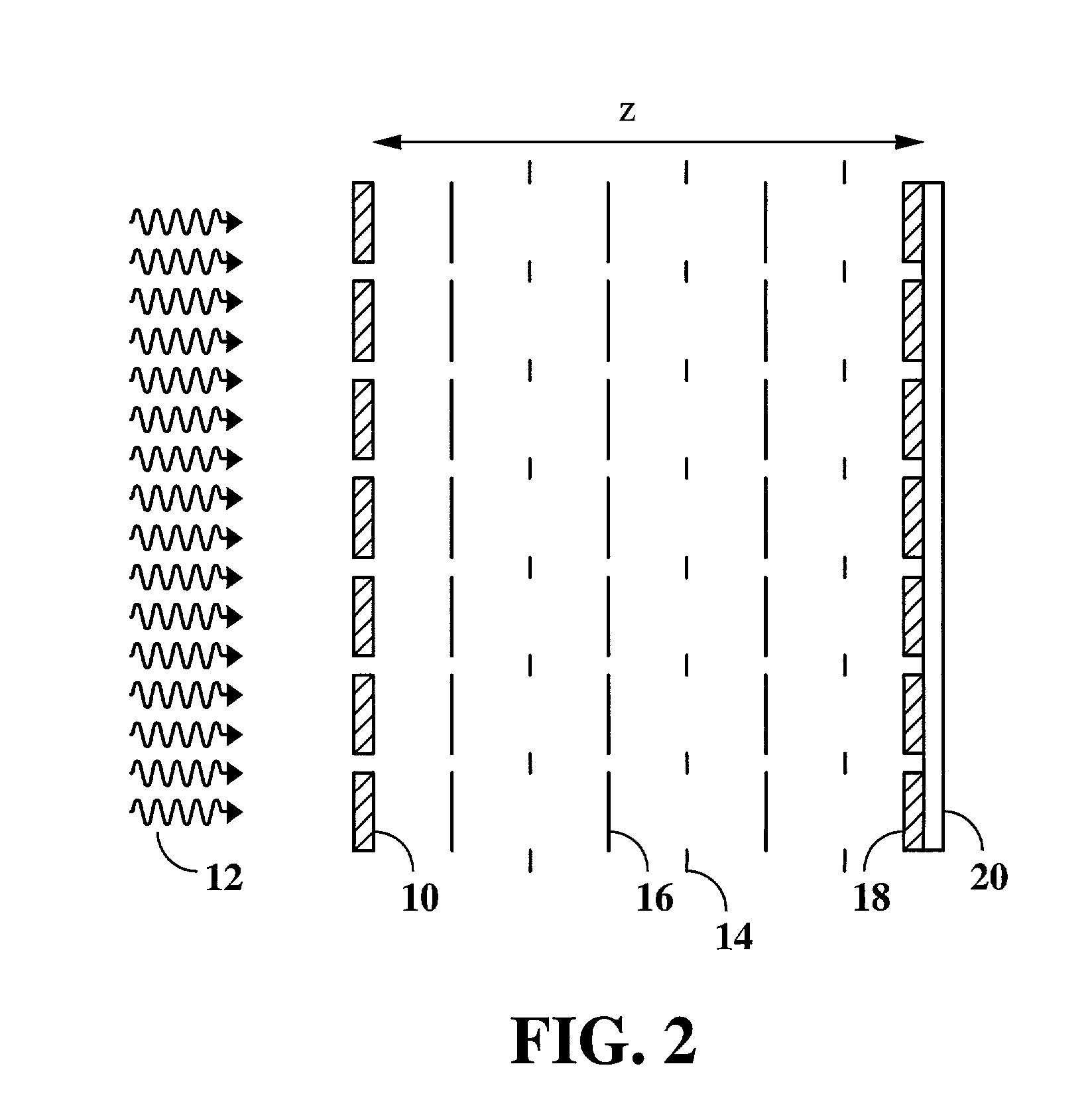Miniaturized talbot spectrometer
- Summary
- Abstract
- Description
- Claims
- Application Information
AI Technical Summary
Benefits of technology
Problems solved by technology
Method used
Image
Examples
first embodiment
[0018] As illustrated in FIG. 3, the present invention comprises a first spatially periodic object 21 (e.g., a grating), a second spatially periodic object 22 having the same periodicity pattern as the first object 21, and a detector 24 positioned in contact with, or in very close proximity to the second spatially periodic object 22. In the present context, a spatially periodic object is defined as a planar or approximately planar object having spatial periodicity in one and / or two spatial dimensions of its plane (e.g., a grating with horizontal and / or vertical lines). For simplicity, the term "grating" will be used hereafter to refer to any such spatially periodic object, and its "pattern" will be used to refer to its particular pattern of spatial periodicity.
[0019] The two gratings 21 and 22 are oriented parallel to each other and positioned perpendicular to a common optical axis with their patterns rotationally aligned. The gratings are separated by a distance z along the optical...
second embodiment
[0023] the present invention, shown in FIG. 4, does not require mechanical movement of the components. In this embodiment, light 28 passes through a first grating 30 and generates Talbot images, just as before. A CCD or other type of detector array 34, however, is fixed at a small angle .theta., as shown. As a result, different parts of the detector detect Talbot images at different distances, covering a range of .DELTA.z. The same effect can be produced by fabricating the detector in the form of a "staircase." In either case, each row of pixels in the array measures the image intensity at a different distance in the z-direction. As a result, the various rows together provide a measure of the periodicity of the Talbot self-images. An advantage of this embodiment is that it does not involve any moving parts, and is able to measure the intensities at all the distances simultaneously. It should be noted that, instead of tilting the second detector, the first grating may be tiled instea...
third embodiment
[0025] In the present invention, shown in FIG. 5, a single structure is made both to generate and to detect Talbot self-images. The structure comprises a periodic array of detectors 36 grown on a transparent substrate 38. The device works by shining light 40 though the structure, reflecting the diffracted light off a mirror 42 and then detecting the reflected light with the detectors 36. The structure, for example, can be made of vertically grown PIN detectors. Other types of detectors, such as vertical stacks of PIN diodes or photoconductors (PIP or NIN) grown on a transparent substrate, can also be used. Each detector element has a thick doped region grown on the substrate, an intrinsic region grown on the thick doped region, and a thin doped region grown on the intrinsic region. Light 40 passes through the transparent substrate and either passes between the detectors or is absorbed in the thick doped (N or P) region of each detector and thus does not generate significant photocur...
PUM
 Login to View More
Login to View More Abstract
Description
Claims
Application Information
 Login to View More
Login to View More - R&D
- Intellectual Property
- Life Sciences
- Materials
- Tech Scout
- Unparalleled Data Quality
- Higher Quality Content
- 60% Fewer Hallucinations
Browse by: Latest US Patents, China's latest patents, Technical Efficacy Thesaurus, Application Domain, Technology Topic, Popular Technical Reports.
© 2025 PatSnap. All rights reserved.Legal|Privacy policy|Modern Slavery Act Transparency Statement|Sitemap|About US| Contact US: help@patsnap.com



